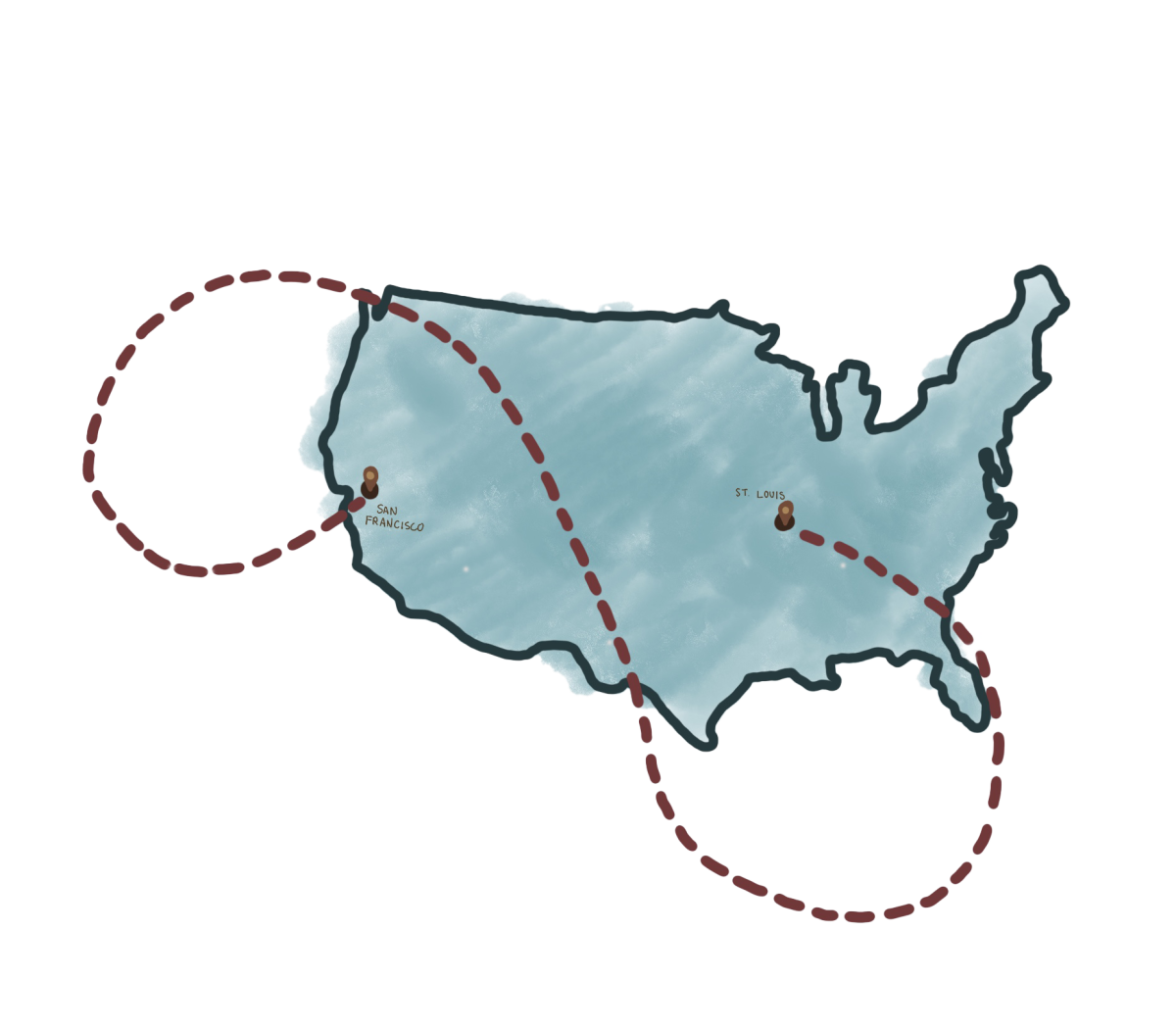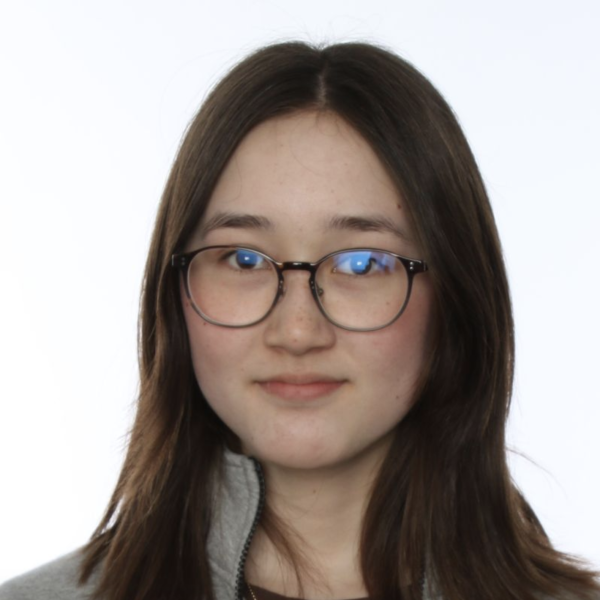On the morning of November 29, 2023, rather than heading to their B period classes, six Urban students and three faculty members gathered in the Page Street lobby with suitcases in hand. Usually filled with school supplies and lunchboxes, their backpacks were instead packed with toiletries, blank journals and changes of clothing. They were about to embark on a journey to St. Louis, Missouri to attend the Student Diversity Leadership Conference (SDLC).
The National Association of Independent Schools (NAIS), a coalition of independent schools across the United States, spearheads the organization of the conference each year. According to their website, “[SDLC is] a multiracial, multicultural gathering of student leaders from eligible independent high schools across the U.S. and abroad.” It is a part of the People of Color Conference (PoCC) for faculty at U.S. independent schools who are interested in finding affinity and working on equity and inclusion.
The conference takes place over three days, during which students have the opportunity to interact with hundreds of the 2,000 other students in attendance. Students explore a variety of topics related to identity and belonging by spending mornings and afternoons in discussion cohorts, known as family groups, with around 70 other students. In the evenings, they attend closed affinity spaces.
The six Urban students who attended the conference this year journaled and took notes in personal notebooks, recording thoughts about their identities and brainstorming how to improve the school environment for students belonging to marginalized communities.
“Any opportunity I get to witness students taking their activism work and their identity work outside of the classroom feels really powerful,” said Dean of Equity & Inclusion Jason Ernest Feldman. In addition to supervising the students, Feldman attended PoCC along with two other Urban faculty members, Grade Dean and English Teacher Lingerr Senghor and Service Learning Teacher Jeremiah Rosenfels.
“It is such a thrilling experience to meet people from across the nation,” said Linda Ye ‘24, SDLC attendee and co-leader of the Asian/Pacific Islander (API) affinity space at Urban.
“With some people [at SDLC], it felt like you had known them almost all your life and you felt really connected to them on a different level,” said Jaxon Howard ‘25, who attended SDLC and co-leads the Black Student Union (BSU).
Ye noted that the conference’s environment — one without the social pressures present at school — invited openness and connection with other students. “[SDLC is] a space where people are comfortable with speaking up and pointing out something that is wrong in their community,” she said. “And there are so many things that … you can’t see unless [people] choose to be vulnerable.”
In an interview with The Urban Legend, Katherine Dinh, past speaker at SDLC and former board chair of NAIS, discussed being vulnerable and feeling accepted while giving the keynote speech at the conference in 2022.
“All I felt like I could offer that was unique was my story … [but] in just sharing about who I am, I felt a great deal of empathy from the audience,” she said. “I think that the eagerness that students had … to learn and hear about my story and then to ask really personal questions … just [felt] really vulnerable.”
To many who attended SDLC, one key takeaway was the importance of finding joy in doing work on diversity, equity and inclusion (DEI).
“I had a bit of stress in preparing for [the conference], but the actual experience was just full of joy,” said Dinh. “The only way to keep doing our part to further inclusion and belonging [and] to celebrate diversity and equity is to find joy in it.”
“We all empowered each other in one space,” said Ye, describing how students in her family group frequently encouraged one another to share during discussions. “That was the most joyful part of it.”
Affinity space meetings at SDLC also often focused on celebration, with group activities such as ballroom performances and karaoke to conclude each night.
Ye said she hoped to bring this emphasis of joy back to school. “Oftentimes we name communities as being deprived or [being] incapable of changing who they are as marginalized communities,” she said. “I think sometimes we should focus more on empowerment rather than being down in the dumps.”
This year’s attendees from Urban returned to school on Monday, December 4, 2023, which presented a difficult shift from the conference’s environment for some.
“It’s almost a little bit jarring to come back into class,” said Anushka Chandran ‘25, SDLC attendee and co-leader of the Multi-Racial/Multi-Ethnic (MESH) affinity space.
After experiencing SDLC’s open conversations about identity, Chandran noticed the absence of a similar atmosphere back at school. “[I] realized I don’t really have those conversations with my friends at Urban or in my life in general,” she said. “We never talk about [identity], despite knowing each other for so long. We don’t talk about it in the way that we talked about it at SDLC.”
Howard also reflected on the difference between being a person of color at SDLC and at Urban. “[At SDLC] I got to experience what life might be like if I wasn’t in the minority and sort of go about my day in the majority,” he said. “It felt transformative in a lot of ways because it gave me a new perspective on my place as a person of color within Urban and also within the world.”
The students pinpointed several ways in which Urban has room to move toward mirroring SDLC’s inclusive environment, especially as a predominantly white institution.
“I wish that [we] had a bit more collective activism,” said Howard. “It’s one thing to stand in solidarity with somebody, but to actually care about what happens or actually do something to better it is another thing.”
Chandran similarly said that conversations she had while attending SDLC made her reflect more than before on the nature of allyship at Urban.
“There’s a very performative aspect to what a lot of Urban students do,” she said. “It’s almost like if you don’t say something you don’t get the social credit.”
As they returned a little over a month before the start of Urban’s Month of Understanding (MOU), the students hoped to bring what they learned from the conference into the month’s DEI-focused events.
“[During MOU, we should] talk about how we would like to see the Urban community support us and what individuals can do to support their peers,” Ye said. “And also empower people who don’t have the same identity as you, at the same time. I honestly think there’s so much value to that.”
Ultimately, the impact of SDLC is determined by how the attendees use what they learned to make change back at their schools. “[SDLC] left me with a feeling of real optimism,” said Dinh. “These are the students who are going to go out there and be their real selves and make such a difference in the world.”


